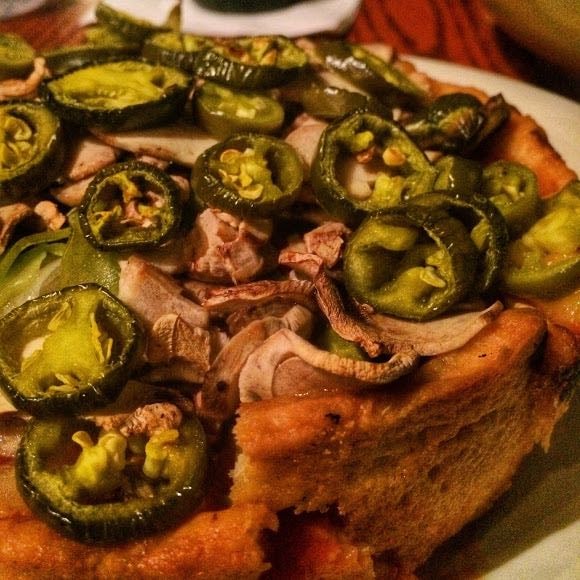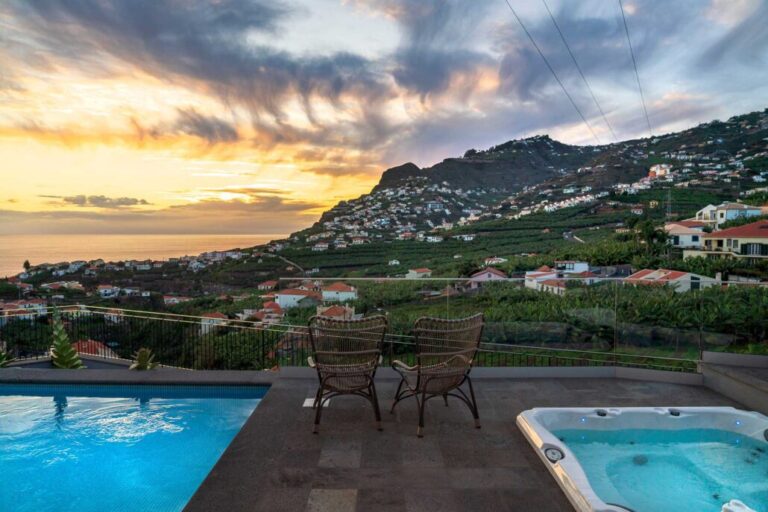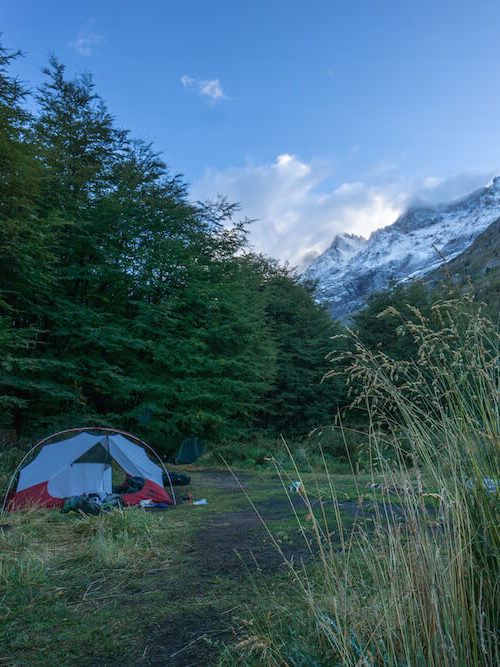When it’s time to leave – by night train to Italy, following in the city’s green credentials – I recognise that Austria has somehow become one of my favourite countries without really realising it was happening.
Serving as both the city’s symbol and a reminder of past residents’ affection for their hometown, the Uhrturm – a short and stump-like clock tower – crowns the city. When Napoleonic troops destroyed the vast Schlossberg fortress that once towered above the Old Town, the residents all came together to pay a ransom to protect their beloved clock tower from the same fate.
My Graz tip? Forget a whirlwind tour of the highlights and settle in for a while; the Styrian people will certainly make you feel welcome, and your stomach will more than thank you.
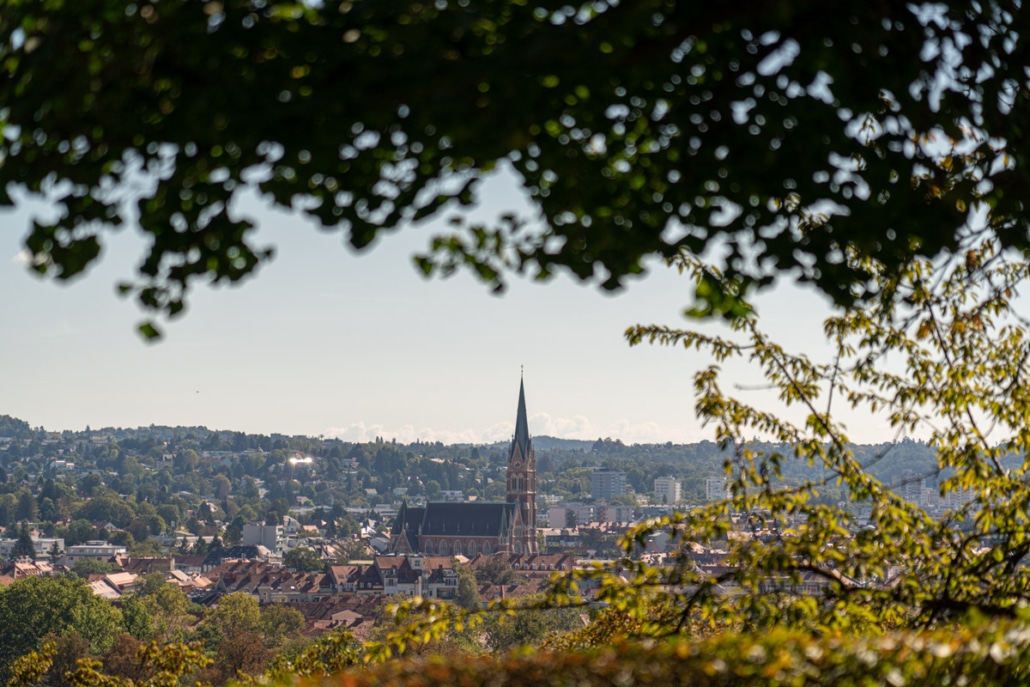
These changes didn’t just happen overnight; a particular turning point in Graz’s story came in 2003 when it was crowned the European Capital of Culture. No longer did the city just have World Heritage status for the Medieval Old Town, but it was also awarded the UNESCO designation as a City of Design. This accolade celebrates Graz’s design schools, forward-thinking architecture and embrace of modern urban design, making it only the second city on the continent to hold both titles, Berlin being the other.
Slowed down sustainability
At first glance, the neighbourhood looks pretty similar to the Old Town. Grand Baroque churches and pastel-hued façades line the thoroughfares, hiding stories of bygone sex work, revelry and crime along the once-historic trade route – and red light district – which linked Vienna with Trieste.
With its near millennia-old architectural history, there are plenty of things to do in Graz, and the Old Town ticks many boxes that any historic European city would, even if it frequently has a slight twist.
Vegetarians and vegans will also find a foodie mecca here, with countless restaurants dedicated to raw food and organic produce. This concept isn’t just limited to dining out either; even the local schools and government offices have adopted a meat-free day each Wednesday. Eating well in Graz isn’t a chore, nor is good quality food necessarily priced at a premium.
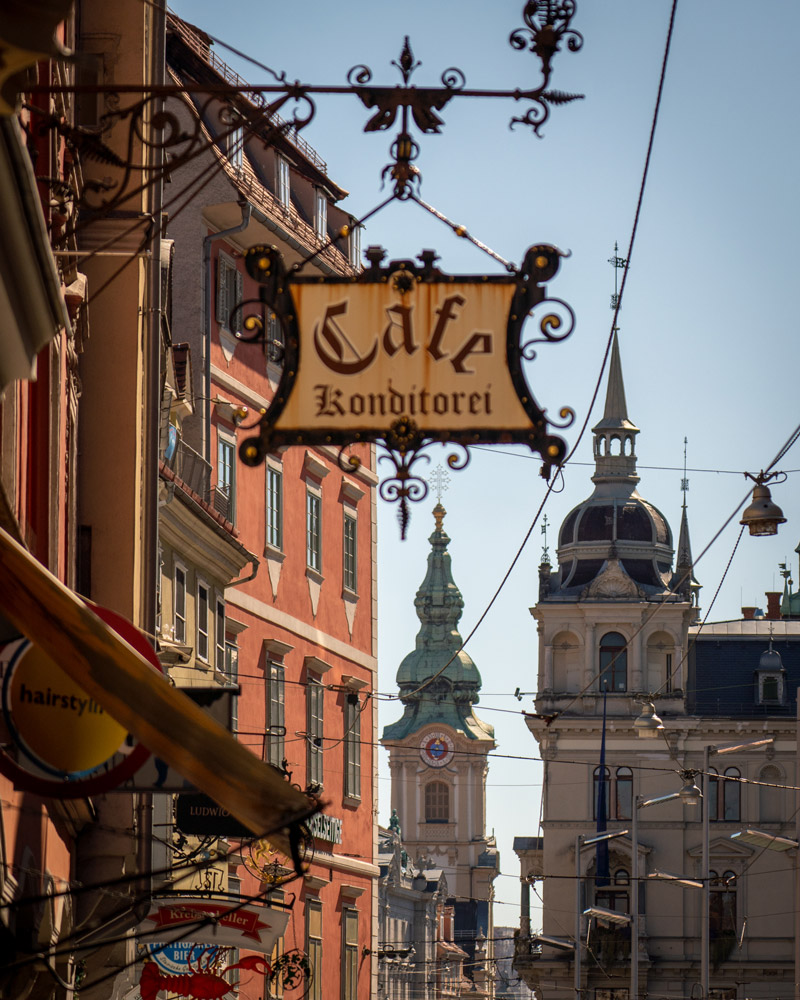
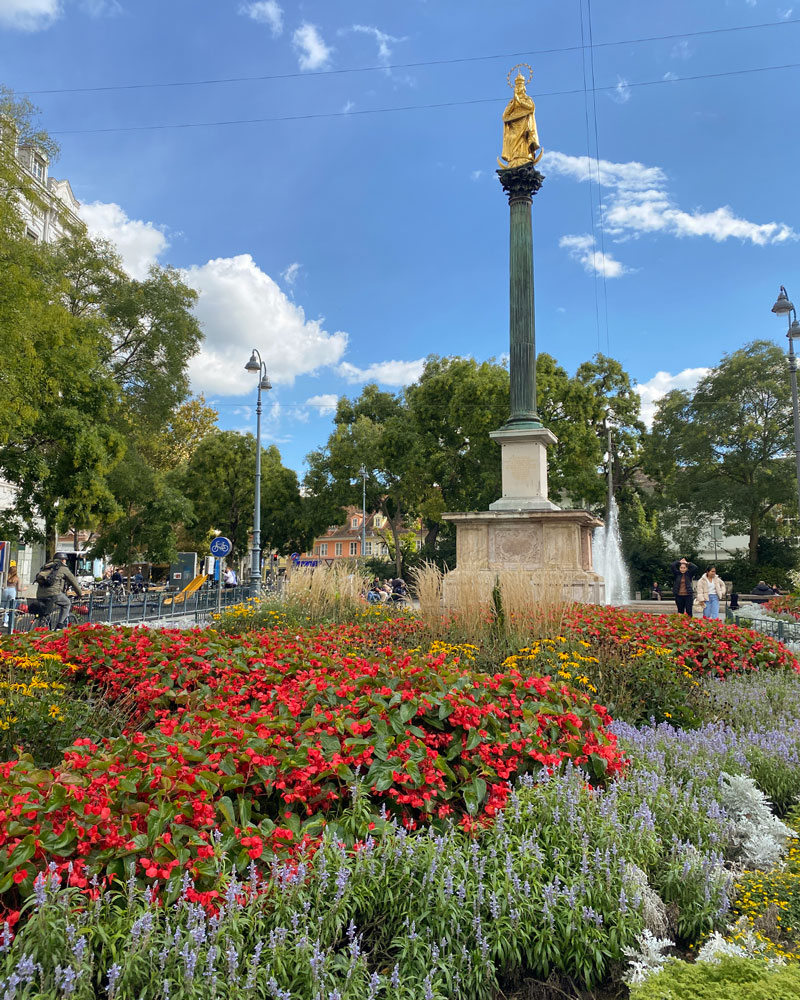
Storied streets web the countless courtyards together, with the occasional memorial stone – an ongoing project – sunk into the floor as a reminder of those persecuted or murdered by the Nazis. Those 50-plus historic courtyards, often dotted with wine bars, offer an Italian-esque edge to the city, providing something of a Mediterranean-like labyrinth.
Community, like Graz itself, isn’t just a story of the past. Everything appears to live in harmony here, and with 150 languages spoken in the city and one in five residents being a student, the youthful and aged forge a way forward – significantly helped by the Old Town still being residential and not taken over by holiday rentals.
There’s a grand Opera House, of course, but outside stands a towering modern Statue of Liberty adorned with a sword. Inside, it’s not just the classics on show, but Graz’s continually growing music scene, which has a particular affection for Jazz. Outside the main monuments, smaller statues also stand. Bronze models recreating the attractions in miniature sit on plinths, allowing the visually impaired to ‘see’ the city’s architecture.
Straying to the countryside certainly isn’t necessary – although highly recommended – to get a flavour of Graz’s growers’ recent harvest. Farmers’ Markets dot the city, and from Monday to Saturday, the very hands that planted the goodies hawk their ochre pumpkins and rich-red berries, adding a face and spot of friendly banter to the fresh produce.
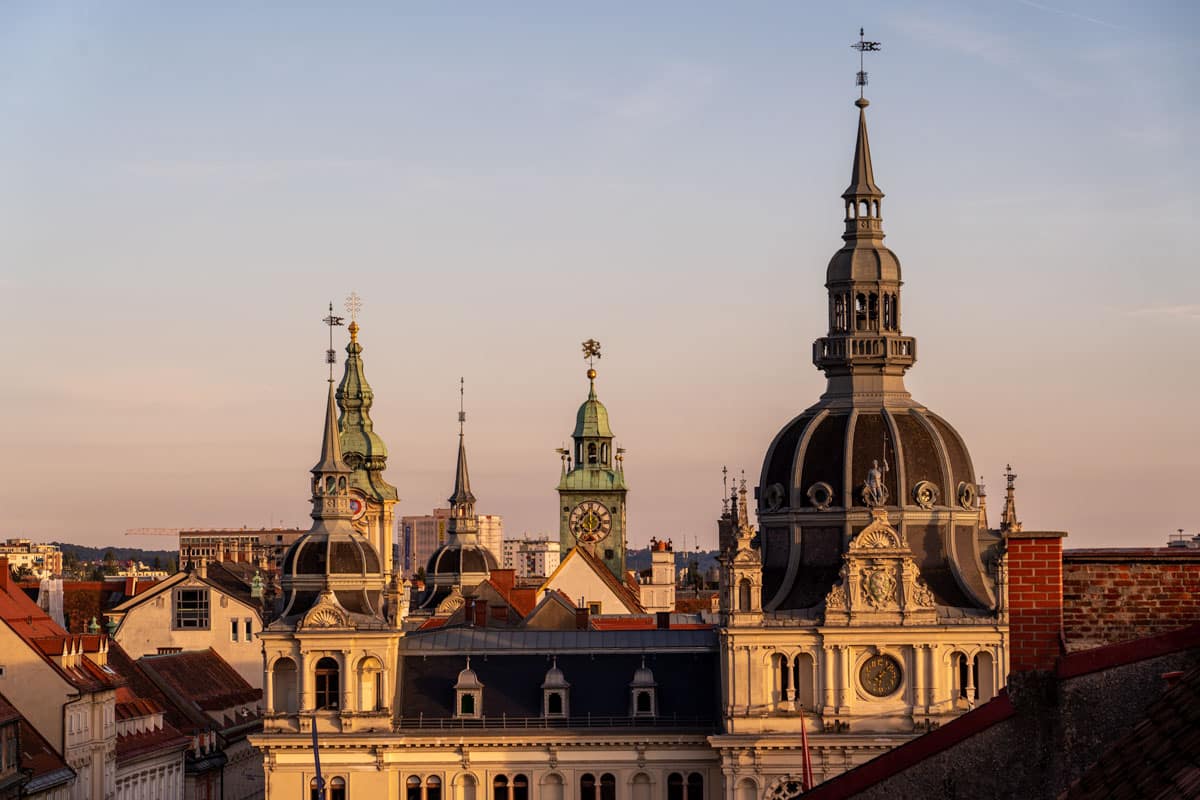
An old city with a young soul: design, culture and community
At its heart, Graz feels like a city where simply existing is a pleasure. Even before you’ve visited a single attraction or sipped your first glass of Styrian wine, you can’t help but wonder how much better life would be if every city felt this way. It’s green, car-free in its heart, and oozes a sense of society, inviting you to linger for much longer than you’ve planned. Surely that makes it the sustainable city break we’re all dreaming of?
If you asked me to tell you why I couldn’t really quantify it beyond how I started this article – Graz is just a wonderful place to exist – and it encapsulates that in a far less pretentious way than other destinations which would rather greenlight, than go forward, with their sustainable ambitions.
Offering much more than water refill fountains – although there are plenty of those across the city – the extent of Graz’s Reduce and Reuse mindset became clear to me the second I stepped off my train from the Czech Republic.
Take Hummel, for example. A women-led, low-waste concept restaurant in the ever-evolving Lend district. Organic coffee beans and homemade bio jams decorate the restaurant-cum-shop’s shelves, while soft pastel-hued furnishings blend perfectly with the brown recycled napkins on the tables. Unlike the Ottomans of the 17th century, whose advances and invasions in the region certainly weren’t welcome, the table laden with their delicious Levantine-inspired small plates certainly is.
While much of the Schlossberg fortress is long gone – as are the stories of those who lived there in the 8th century BC – the elevated green space is endowed with postcard-perfect panoramas. Settle in for a coffee, try and spot the peculiarity with the clock’s hand, and then, you can even take an internal slide back down to the bottom; Graz likes to keep a little fun and not take itself too seriously.
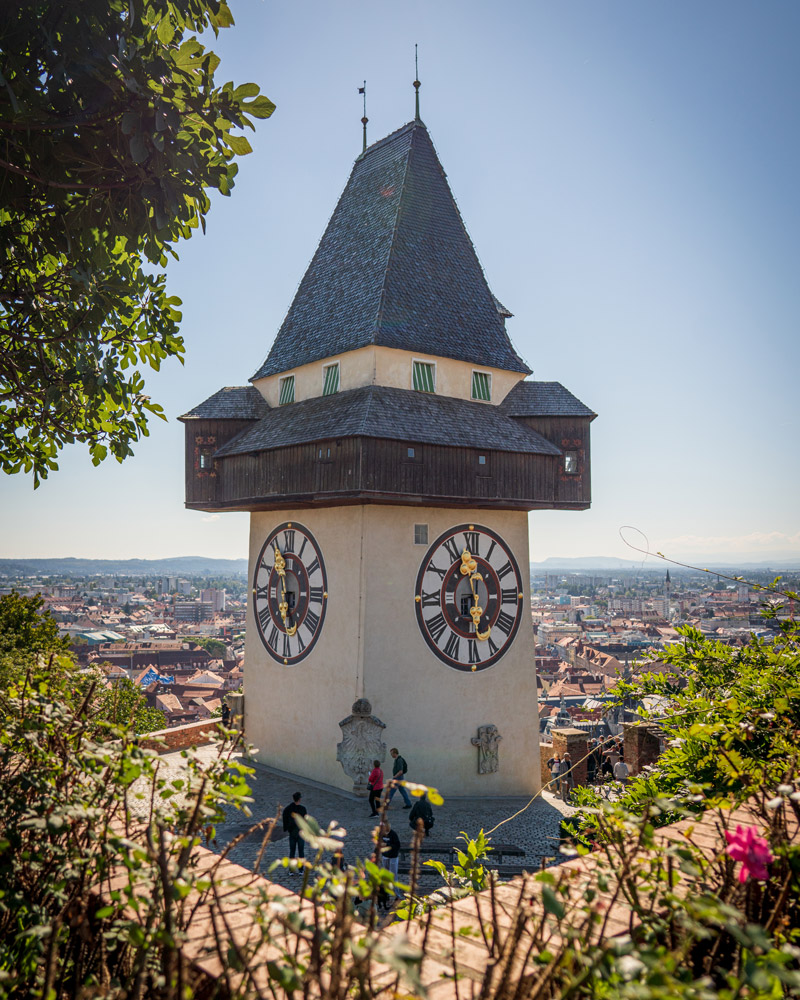
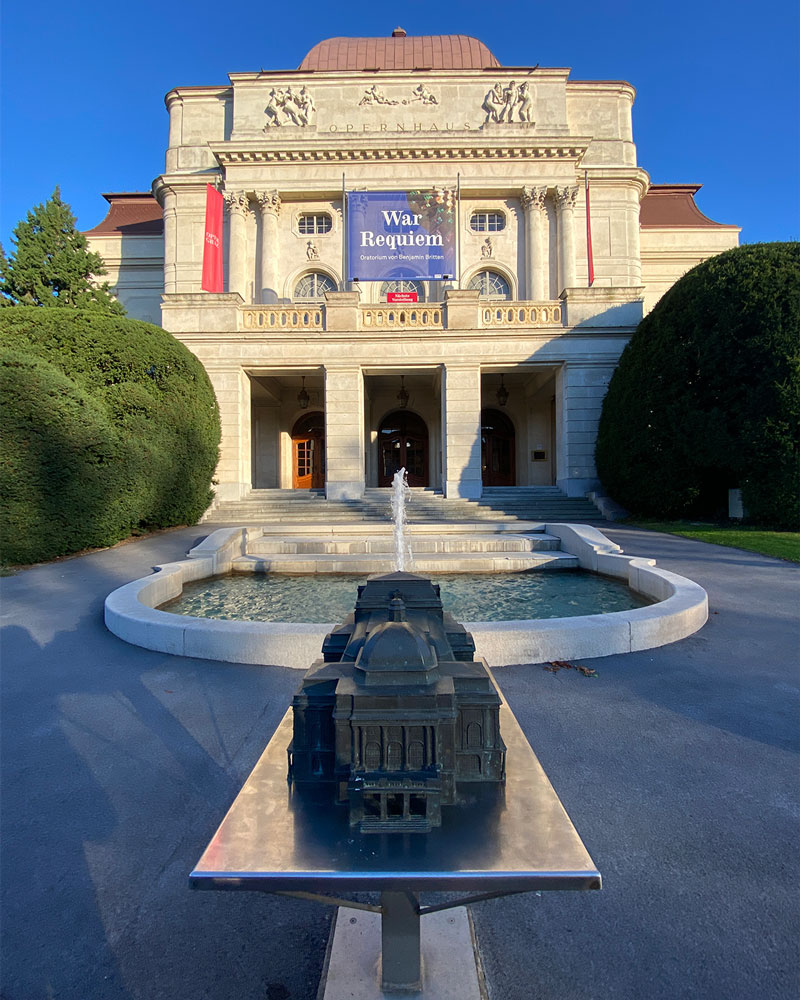
On a chilly September afternoon, the Styrian capital was still desperately trying to cling to summer. The scent of pumpkin oil wafted through the lunch hour air while the clinking of glass celebrated the arrival of this year’s Sturm, a still fermenting wine found only during harvest season.
“What we really like about the market are all those little bars around the edge,” Ruth tells me as we sip on a homemade glass of Schilcher, a rosé crafted from grapes indigenous to the region. “On a summer evening, people meet friends skate, enjoy music and even take salsa classes. It’s a great place for food and fun”.
Just beyond, the Kunsthaus, the city’s modern art gallery, sticks out like a sore thumb – or a friendly alien – as the locals have affectionately named it. An expansive space of black glass that turns into an LED screen by night, tentacle-like windows crawl out from the rooftop, and contemporary and modern exhibitions inhabit the interior.
From Moni, a local chef crafting dumplings in her purpose-built kitchen, which distributes to restaurants around the city – keep an eye out for her name on menus – to Helena, a farmer who was making jam when I visited Fattingerhof, an out-of-city buschenschank (rustic farm-based inns) for a bite to eat, pride is something that oozes from Graz’s residents.

The ‘other side’
The zero-waste concept becomes clear as I take my first mouthful; it’s too good to leave a single morsel. Of course, the credentials are more defined than that, with the ingredients coming from their packaging-free grocery store Das Gramm. How, I wonder, after a mouthful of cauliflower, can it have absorbed so much flavour and not be complete mush? I decide it’s a feat of engineering rather than cooking and quickly move on to one of the 20 or so other plates. When I leave two hours later, stuffed and smiling like I’ve won the lottery, I spot a ‘reuse bread’ shop across the street, where yesterday’s loaves are given a discount-priced chance at finding their way to another table.
While well-heeled residents from the Old Town no longer avoid the area as they once would, even with the advance of gentrification, it still retains a bit of a reputation for freedom-seekers and creatives.
The first, the Murinsel, is an artificial island linked by bridges, originally designed to float on New York City’s Hudson River. Glass and steel walkways fuse Graz’s two sides together, meeting in the middle at a central platform where art is displayed amongst locals lounging with a latte.
This isn’t the only continent-bucking trend in the local political landscape, though, as the recent surprise election of the city’s first communist mayor – promoting a platform of rent freezes and limiting gentrification – shows. However, it’s far from just being a government-led drive to make Graz a greener, fairer city, with charities, NGOs, partners and local businesses joining forces to form a better and more community-focused place to live.
While we often visit the markets when travelling to get a sense of a location, here, you’ll get much more than that. You’ll be gifted with a sense of the residents’ pride.
Following some slightly poor packing, I was hunting for warmer trousers. Firing up Google maps, no less than ten second-hand clothes stores flashed before me, seemingly outnumbering the fast-fashion chain stores that dot every European high street.
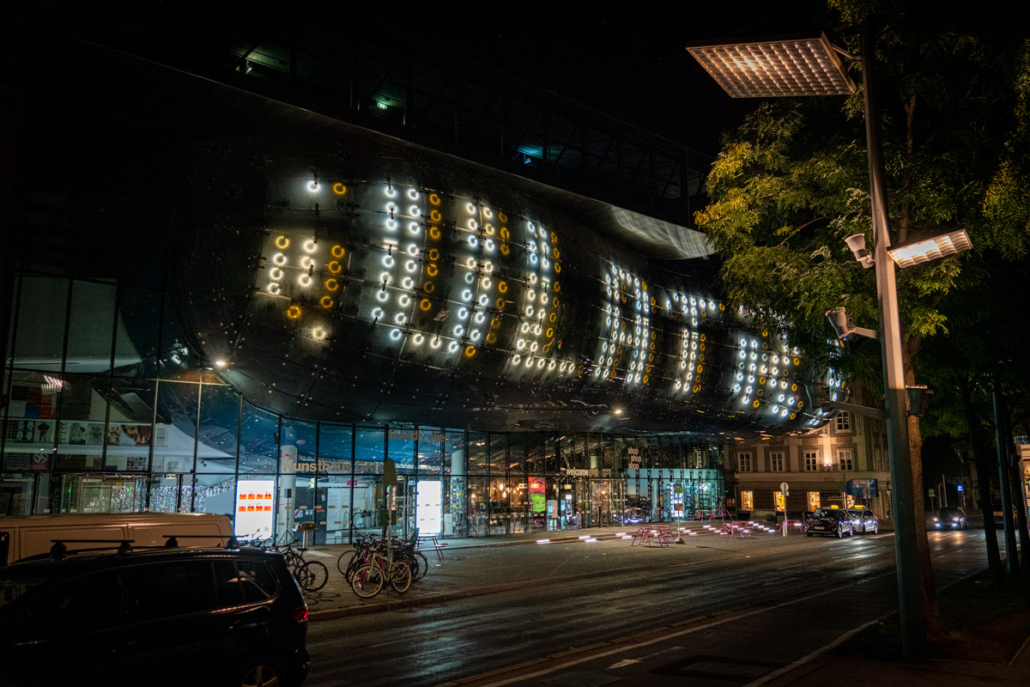
The Styrian countryside, the fertile farmlands that envelop Graz, play a massive part in the city’s status as Austria’s Culinary Capital. However, the bestowed title is far more than a marketing gimmick and leads to a city-wide philosophy of what food should be.
Yet, this important ingredient isn’t just in what is produced here; it’s also a passion for preserving the lush landscape for future generations. Whether it was Susanne Huber telling me about her sustainable screen-printed fashion, some using cutting-edge replanted wood-based fabrics at Peaces, or the staff of TAG werk explaining how their trendy recycled backpacks also create youth employment, there was no denying that sustainability was very much a lived goal.
Yes, Graz is a city of gentle paradoxes. A place where the classics and the contemporary coexist. Where culinary creativity makes you question everything you think you know about Central European cuisine. A city with such a pronounced focus on fresh produce that farm-to-fork restaurants are simply called restaurants, and the stalls at farmers’ markets are as much about the growers as the produce.
This article was produced in partnership with #TravelDeeperGraz, who supported my autumn 2022 visit with guides and accommodation. All editorial content is, as always, my own
Nowadays, brothels have been reborn as trendy cocktail bars, organic restaurants serve up cuisines from around the world, and social-impact-focused stores, such as Offline Retail, up-cycle while creating employment opportunities and supporting local communities. It’s been a relatively recent and quick turnaround for Lend, and perhaps the increase in the speed of the change – and rents – can provide an answer to the shock of the recent mayoral elections.
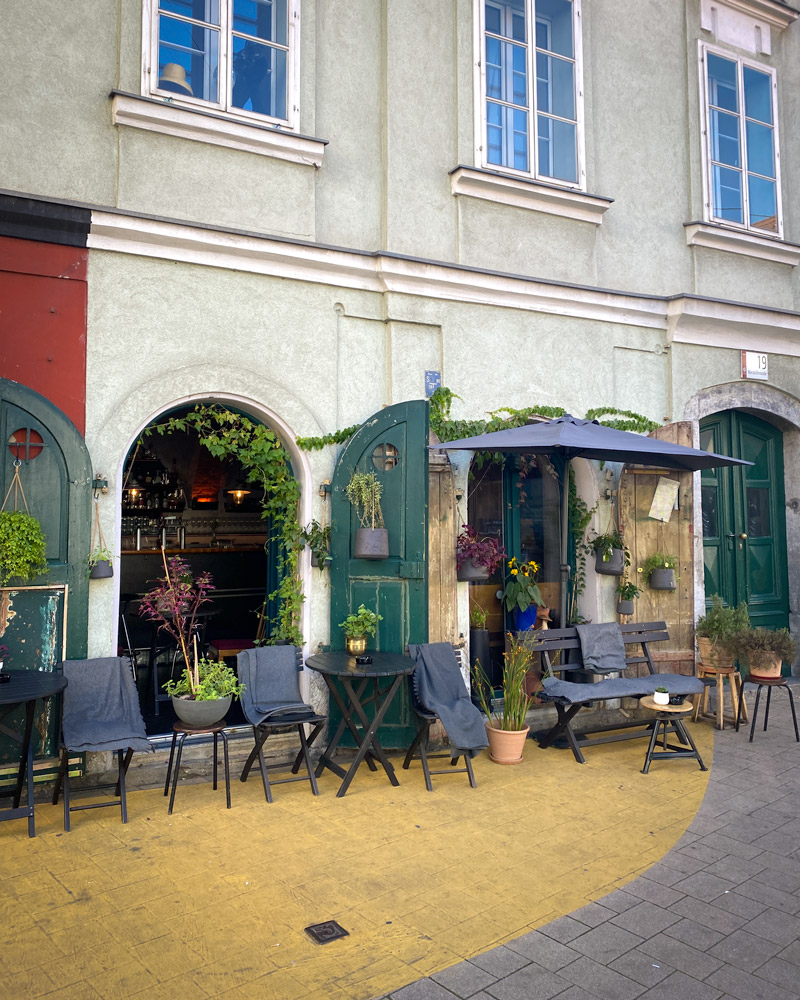

Farm to fork without the cliché
Austria’s second-largest city doesn’t just tout its green credentials; it lives them. Sure, that’s easily boasted in a city that’s 60% green spaces, but sustainability isn’t solely a buzzword here; it seems to be a way of life. From up-cycling shops supporting those struggling on the streets to zero-waste cafes reinterpreting yesterday’s leftovers, the community is as much to thank for the city’s ecological drive as the surroundings.
In neighbouring Gries, where gentrification is less noticeable, Ruth tells me you can experience an air of what Lend was like a decade or so ago. With community-focused festivals – I stumbled upon a street party that was founded by a hairdresser many years ago – an active church reimagined with graffiti-style modern art, and so many independent bars, galleries and artisanal stores, enjoying a craft beer here feels like a different Graz than the wine bars of the Old Town.
Before reaching the heart of this up-and-coming (read: starting to gentrify) district, you’ll encounter two of the city’s most prominent modern architectural feats.
There’s a slightly Mediterranean vibe amongst the pastel-hued courtyards dotted with olive trees. In the pedestrianised city centre, you’ll hear the whirring of trams and the jingle of bicycle bells rather than cars. Some 20 percent of the population are students, keeping a young soul beating through the old town. A communist mayor – a surprise of the previous election – currently leads the council. And, of course, there are the two UNESCO designations, both for the historic core and the forward-thinking design.
Hopping on the tram – free in the city centre – which highlights each journey’s CO2 usage, I quickly realised how walkable and compact the core was. Free from cars, the grand central avenues provide a haven for pedestrians and bicycles to co-exist, occasionally giving way to the regular trams and the city’s new emission-free hydrogen buses.
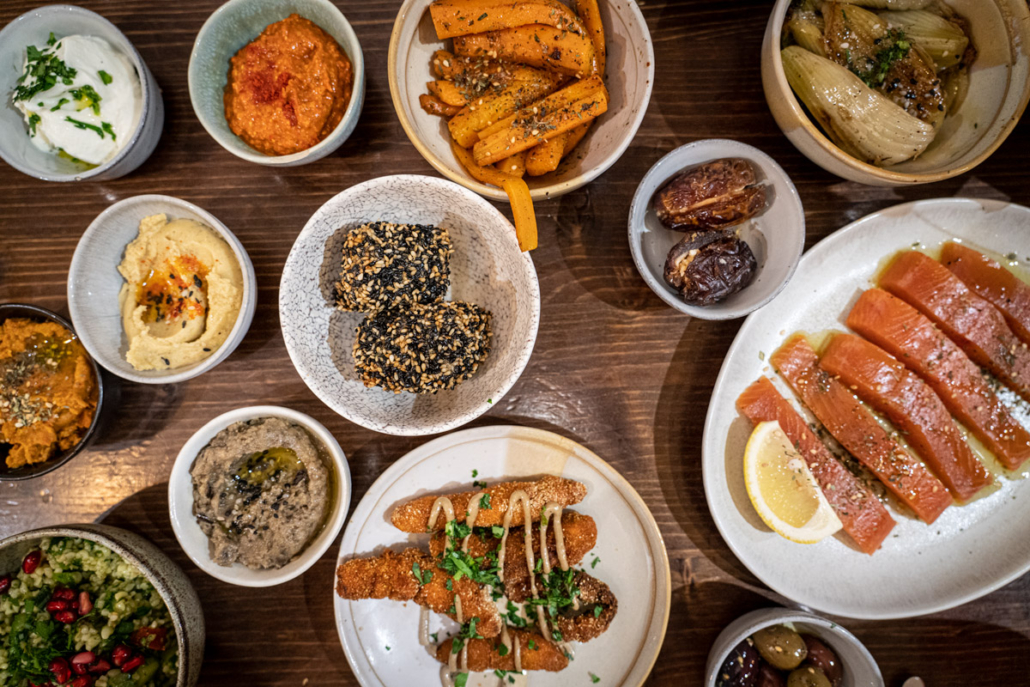
These two buildings forever transformed the whole city – at first with much local disdain – but for Lend, they were the start of a catalyst of change.
Take everything you’ve imagined about an Austrian city and throw it out the window. Graz doesn’t have quite the same level of grandeur as Vienna, the classical music culture of Salzburg, or the Alps on its doorstep like Innsbruck, but it does have something else – although it’s hard to quantify what that beguiling something is.
It’s a part of the city you venture to just to enjoy the atmosphere rather than to tick off sights, providing a welcome, and complementary, change of atmosphere to the polished Old Town.
While you’ll spot the intertwining of contemporary and classic architecture across the city – from the curve-shaped buildings of the late Iraqi-British architect Zaha Hadid to the aforementioned Statue of Liberty – two of the city’s most futuristic emblems link the grandest part of the city with two lesser-visited neighbourhoods; Lind and Gries.
Take fast food – and forget McDonald’s – the quick bites menus in Graz are much more exciting and green. At Swing Kitchen, I tasted the most delicious vegan burger, washed down by a bottle-free refill served in a tin-can cup. Likewise, you won’t find Starbucks here; instead, the go to is local chain Tribeka for a cup of fair-trade coffee. Even the vending machines offer local produce, while many of the surrounding farms have 24-hour honesty-box style shops to grab last-minute fresh produce.
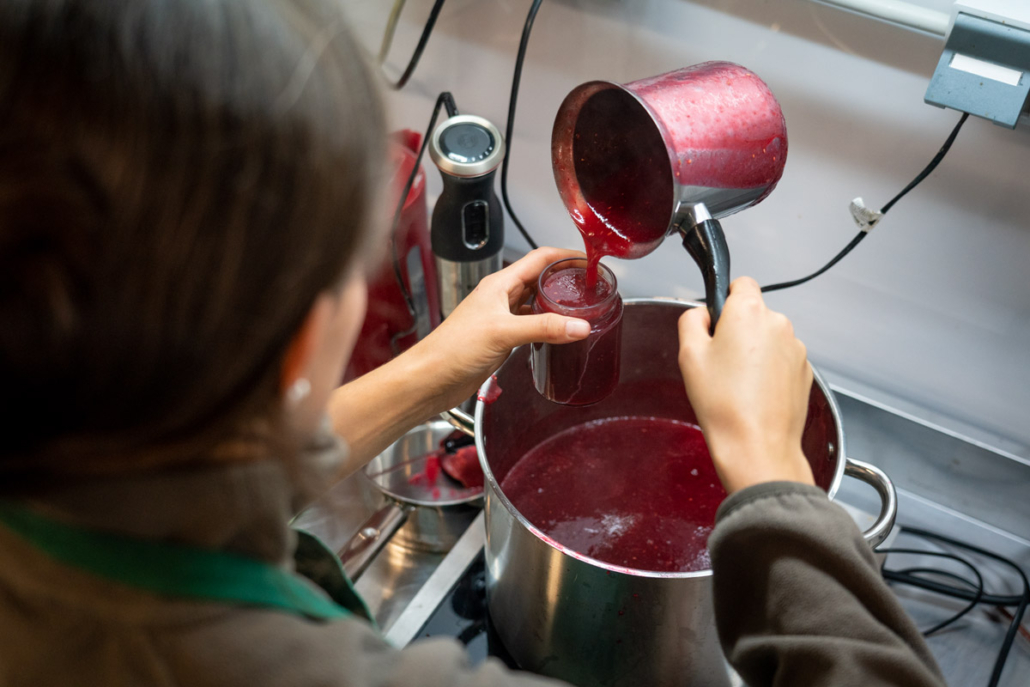
Asking the receptionist at Hotel Gollner – the characterful family-run hotel I was calling home – to recommend some farm-to-fork restaurants, I received a questioning look back. In this city, eating local produce isn’t something to celebrate; instead, the standard. Some vetted establishments are highlighted with the “Genuss Hauptstadt” logo in their window, showing their commitment to quality, local, and seasonal produce. However, these are far from the only dining options living by the ethos.
This was my introduction to ‘The Other Side’, as I often heard it referred to during my visit, which invoked images of some lawless place across the river. As it turns out, this district, Lend, was exactly once that; very much with a facelift nowadays.
Ready to explore Austria’s Eden-like city yourself? Check out my in-depth Graz Travel Guide to discover all the top things to do in Graz, where to eat, sleep and shop, and the best ways to get to and around the city and nearby attractions.
In a city of less than 300,000, where one in five residents is a student, the desire for a clean, climate-focused city has shone through in all recent polling. The Green party has been growing from strength to strength in Graz’s local government, reflecting the resident’s concerns, and countless eco-focused initiatives have been born.
Graz’s goal to be a walkable city, with everything you need reachable on foot, is well underway, and when strolling the streets is as delightful as it is here, the aim appears much more achievable.
Plan your trip to Graz, Austria
You’ll also find the most extensive historic armoury in the world here – a testament to the city’s sometimes troubled past – although the enormous dolomite rock standing in the heart of the city provides the most impressive story of a community in the face of invasion.
“My grandmother warned me about moving here”, laughs Ruth, my local guide, as we cross the River Mur towards the city’s Lend district.
